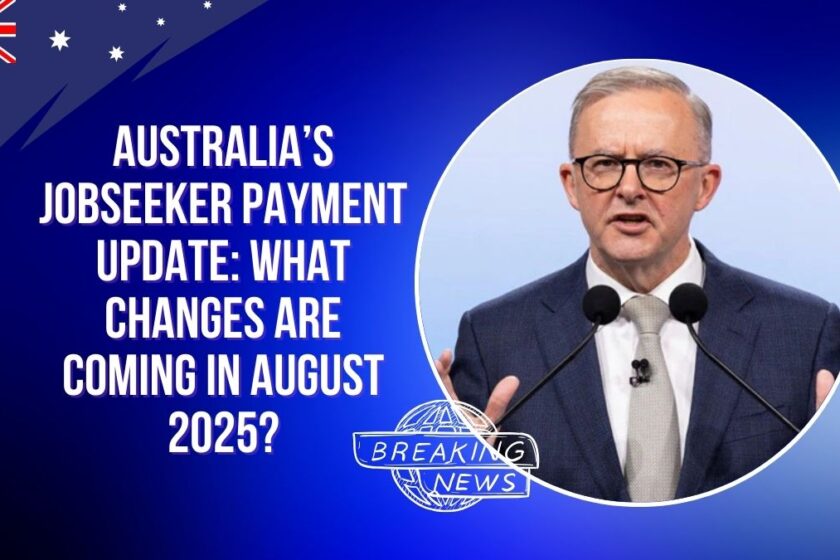As August 2025 approaches, many Australians receiving JobSeeker payments will see modest increases in their Centrelink income. This change is part of the federal government’s routine indexation process, which adjusts welfare rates to reflect inflation and the rising cost of living. However, the changes—though predictable—are being closely examined amid growing demands for more substantial welfare reform.
Understanding the JobSeeker Payment Adjustment in 2025
The JobSeeker payment is a key form of financial support for Australians who are unemployed. It undergoes twice-yearly reviews to align with inflation trends, ensuring recipients aren’t left behind as living costs climb. The August 2025 update reflects more than just routine maintenance—it highlights how the system is evolving in response to mounting economic pressures.
JobSeeker Payment Increase – August 2025 Breakdown
Starting in August, Centrelink will increase JobSeeker rates across several categories. Below is a comparison of the current rates (as of March 2025) and the new rates effective from August 2025:
| Category | Current Rate (March 2025) | New Rate (August 2025) |
|---|---|---|
| Single, no children | $762.20 per fortnight | $779.30 per fortnight |
| Single, with a child | $816.90 per fortnight | $834.50 per fortnight |
| Couple (each partner) | $698.10 per fortnight | $713.40 per fortnight |
These increases are driven by the Consumer Price Index (CPI), not by any budgetary initiatives. Although the adjustments offer some help, they still fall short of the $76-per-day benchmark advocated by social service organisations.
Why Indexation Alone Isn’t Enough
While the new rates may appear helpful on paper, they do not fully account for the real-world cost of living. Australians are facing skyrocketing costs for rent, groceries, and utilities—all rising faster than CPI adjustments.
In cities where housing affordability continues to deteriorate, the modest JobSeeker boost feels more like a lifeline than a solution. Organisations like ACOSS (Australian Council of Social Service) are urging for structural welfare reforms that go beyond biannual indexing.
Other Key Centrelink Updates in August 2025
Along with the payment increase, Centrelink is introducing several system upgrades:
- Enhanced digital platforms for faster claims processing
- Improved fraud detection tools
- Concerns over reduced face-to-face services, especially in regional areas
Eligibility criteria remain largely unchanged, but new pilot programs are exploring ways to simplify the mutual obligation requirements for jobseekers. These changes could expand later in the year depending on outcomes.
How Australia’s Welfare Stacks Up Globally
When compared with similar economies, Australia’s unemployment benefits often seem lacking. For instance:
- New Zealand provides additional housing and family support
- Canada offers higher income replacement rates
The contrast is significant as more Australians, especially seniors and rural residents, rely on JobSeeker long-term—contrary to its original design as a temporary safety net.
Conclusion: What the August 2025 JobSeeker Changes Mean for You
The August 2025 Centrelink update brings incremental increases to JobSeeker payments. However, these small gains do little to resolve the deeper financial instability faced by many recipients. While every increase helps, the broader system remains under pressure to deliver lasting, impactful change.
As inflation continues and living expenses mount, the question persists: will future welfare reforms go far enough to truly support Australians in need—or are we simply patching a leaky system?
FAQs
What is the new JobSeeker payment rate from August 2025?
From August 2025, single recipients without children will receive $779.30 per fortnight, and those with children will receive $834.50. Couples will each receive $713.40 per fortnight.
How often is the JobSeeker payment updated?
The JobSeeker payment is reviewed twice a year, in March and August, based on changes in the Consumer Price Index (CPI) to reflect inflation.
Why are advocacy groups unhappy with the increase?
Groups like ACOSS argue that the current adjustments don’t match real-world expenses, such as rent and food prices, and push for a rate of $76 per day to meet basic needs.
Will Centrelink eligibility or obligations change in 2025?
While eligibility criteria remain mostly the same, Centrelink is testing new systems for reporting job-seeking activities, which may become permanent later in 2025.
How does Australia’s JobSeeker compare to other countries’ welfare programs?
Australia’s system is often seen as less generous compared to countries like Canada or New Zealand, which offer stronger support for housing and families.
